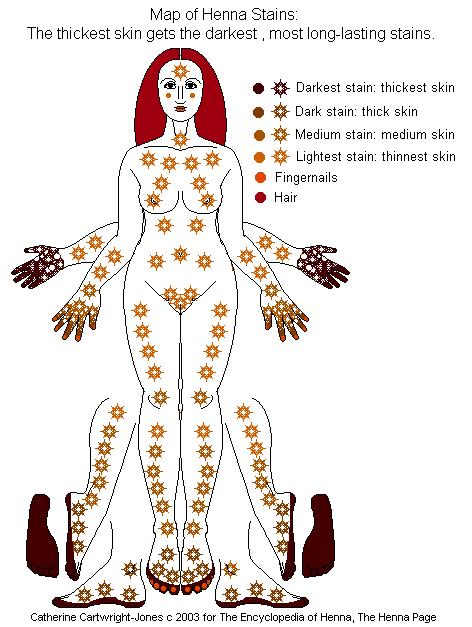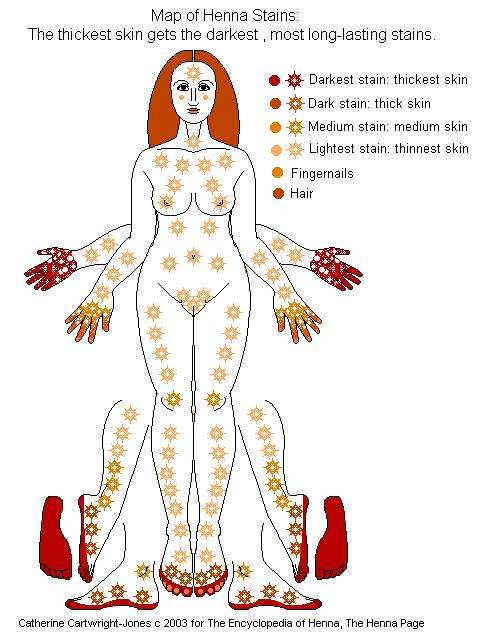|
Mapping Henna Stains on Your Skin Some people get brownish henna stains, and those stains vary across the body. Stains are darkest where skin is thickest. Stains last longest where skin is thickest. Meat eaters, people who are young, people who do not use lotions or alfa-hydroxy or anti-oxidant products, people who are in robust health, people who are happy and relaxed, people who are physically active, people with high metabolisms, people in their sexually reproductive years, menstrual or premenstrual people, and people whose skin is very warm to the touch tend to get very dark or brownish stains. "Terped" henna is likely to go brown, because "terping" makes more Lawsone available, and thus the skin cells are more heavily saturated with dye.
Some people get reddish henna stains, and those stains vary across the body. Stains are lightest where skin is thinnest. Stains last only briefly where skin is thinnest. Vegetarians, people who are older, people who oil and lotion their skin, people with impaired circulation, people under stress, people in poor health, people with low metabolisms, people who are beyond their reproductive years and who are not taking hormone supplements, and people who's skin feels cool to the touch tend to get reddish stains. "Unterped" henna is likely
to give
a reddish stain, because there are moderate levels of Lawsone
available,
which give moderate dye saturations of the skin cells..
Yes, that was god awful complicated, but there are a lot of factors involved! Back to The Encyclopedia of Henna Index Can't find what you're
looking
for? Try:
"Henna, the Joyous Body Art" the Encyclopedia of Henna Catherine Cartwright-Jones c 2000 registered with the US Library of Congress TXu 952-968 |

